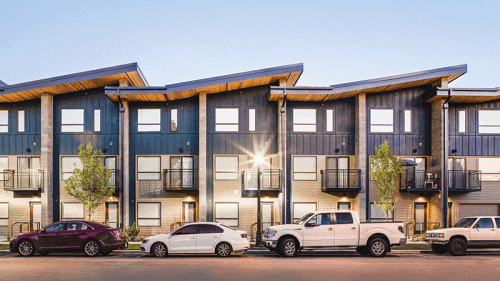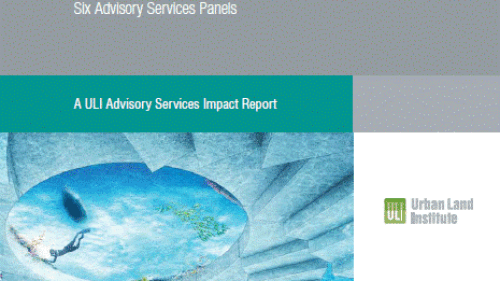Property Types
Hotels and Resorts
The Commercial Mortgage Alert Trepp weekly survey of 15 active portfolio lenders widened slightly during the most recent survey period. It’s year-end, and lender’s are starting to focus on next year’s allocations. If it’s a typical start, rates will be up slightly as lenders test the waters as to what spreads will work and what borrowers” will accept. We’ll see if the current glass ceiling of 5.0 percent holds or if it’s off to the races in 2011.
The Commercial Mortgage Alert Trepp weekly survey of 15 active portfolio lenders came in slightly during the most recent survey period. During the period, 10-year Treasury bond yields were unchanged. There seems to be an all-in cost of 5.0% “glass ceiling” in place. For the survey period, average all-in cost equaled 5.02%, the “present” glass ceiling. Not much is expected to happen during the next two weeks so we’ll sit on the sidelines and wait for January’s allocation to re-fill lender’s coffers.
The Commercial Mortgage Alert Trepp weekly survey of 15 active portfolio lenders was unchanged. There seems to be an all-in cost of 5.0% “glass ceiling” in place. For the survey period, average all-in cost equaled 4.80 percent.
Industrial
The Commercial Mortgage Alert Trepp weekly survey of 15 active portfolio lenders was mixed with some widening and some narrowing between October 22nd and October 29th. During the period, 10-year Treasury bond yields came in 5 basis points, with average all-in cost equal to 4.83 percent.
The Commercial Mortgage Alert Trepp weekly survey of 15 active portfolio lenders was mixed with some widening and some narrowing between October 15th and October 22nd. During the period, 10-year Treasury bond yields widened 5 basis points, with average all-in cost equal to equal to 4.89 percent.
Organizers of Expo 2010 have put together a set of five pavilions and a best practices area based on the “Better City Better Life” theme. The organizers have clearly sought to examine the “Better City” theme in a straightforward and easily comprehended manner. Read about how the Urbanian Pavilion, Pavilion of City Being, Pavilion of Urban Planet and others portray their messages.
Mixed-Use
A crumbling industrial site on the fringe of Brooklyn’s real estate boom is becoming a magnet for innovative businesses. Industry City has drawn Fortune 500 companies, technology startups, a professional sports training facility, an ice cream maker, and visual artists to a complex of 15 giant, century-old factory buildings on the Brooklyn waterfront.
In an opinion piece for Urban Land Online, ULI Foundation Governor and developer John McNellis argues that mandating mixed use is not the best way to incentivize development.
For mixed-use development to be truly transformative, it needs a story, panelists said at the ULI Asia Pacific Summit, held June 3 in Tokyo.
Multifamily
Ten projects leverage public and private resources to realize complex new developments.
A new ULI report explores the social, environmental, and economic benefits of creative placemaking, along with successful case studies in the United States.
Investors who specialize in “deconverting” condo properties back into rentals are finding opportunities. But the deals take patience and fortitude.
Office
The evolution of the workplace is being driven by changing demands and the power of big data, said speakers representing developers, designers, futurists, and millennials at the 2019 ULI Asia Pacific Summit in Shanghai.
As shown by high-profile developments in metro areas like Austin and Dallas/Fort Worth, Texas is redefining the notion of the central business district (CBD), said the president and chief executive officer of the Texas Economic Development Corp. speaking at the ULI Texas Forum in Austin. Companies will maintain urban footprints, he said, but a number of major employers in the Austin area are expanding away from the downtown.
The commercial real estate sector must adjust to a trend in which corporate tenants increasingly see buildings as tools to recruit and retain talent and boost workforce productivity, panelists said at the ULI Spring Meeting in Nashville. Real estate developers need to focus on designing innovative, customized spaces and offering amenities that help their tenants meet their strategic goals concerning human capital.
Residental
Regulations addressing local conditions could spur new supply in the coming years, writes Diane de Felice, a shareholder at Brownstein Hyatt Farber Schreck.
The Federal Housing Authority (FHA) provided some news the housing industry can be thankful for this holiday season—an increase to loan limits across 3,011 counties. In particular, some of the markets that have faced the most rapid price appreciation over the past few years saw a sizable jump. Seattle saw the largest absolute value increase of $75,000 and a 13 percent change. Other notable year-over-year movers include Salt Lake City (8.4 percent), Minneapolis (7.3 percent), and Denver (7.2 percent).
At a panel discussion hosted by ULI Pittsburgh, experts highlighted the city’s interesting architecture, relatively affordable housing in walkable neighborhoods, and a strong outlook for the retail sector.
Retail
For decades, civic leaders have tried to revitalize Market Street, San Francisco’s central thoroughfare, only to see their efforts founder. “I sometimes call it the great white whale of San Francisco,” says Eric Tao, managing partner at L37 Development in San Francisco and co-chair of ULI San Francisco. “Every new mayor, every new planning director, every new economic development director has chased that white whale.” This year, however, an international competition of ideas hosted and run by ULI San Francisco, with support from the ULI Foundation, generated fresh momentum for reimagining the boulevard. The competition drew 173 submissions from nine countries and sparked new conversations about the future of downtown San Francisco.
The OAK project began in 2009, when a development firm set their sights on the corner of Northwest Expressway and North Pennsylvania Avenue, the state’s most important and busiest retail intersection. As the region’s only parcel capable of supporting a vertically integrated project of this scale and density, that land represented an opportunity to create something truly special.
As aging retail continue to evolve, one increasingly popular trend has been to redesign malls as town centers—recalling a time when such commercial districts were the heart and soul of a community. Mall–to–town center retrofits are emerging throughout the nation, especially in suburban communities, where pedestrian-friendly, mixed-use environments are highly attractive to millennials now raising families.












